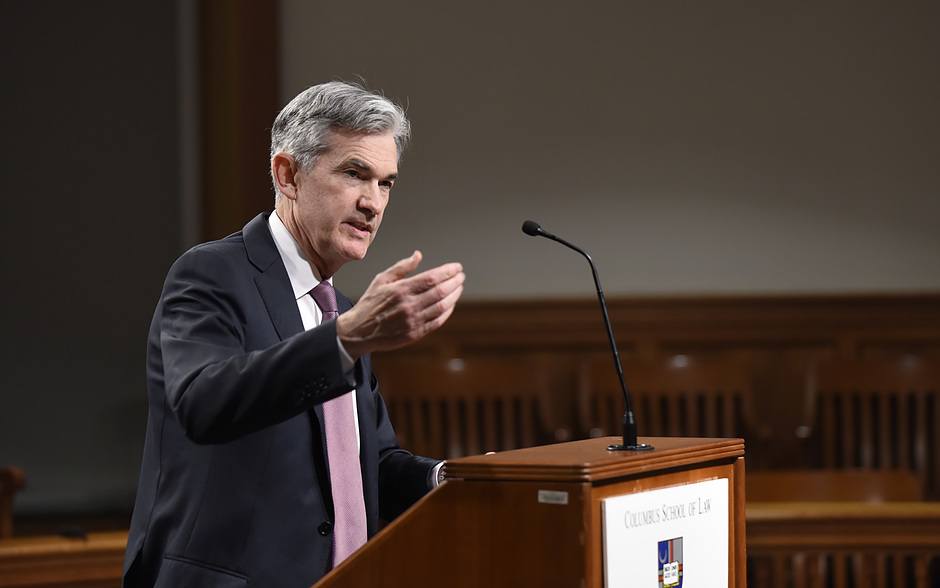Fed Powell's Testimony - Bigger Impact on the Dollar or Risk?

Thanks to Federal Reserve Chairman Jerome Powell's unambiguously positive comments on economy, the U.S. dollar moved higher against all of the major currencies. The Australian and New Zealand dollars experienced steep losses while the Swiss franc and Japanese Yen saw modest declines. This suggests that Powell's comments may end up having a greater impact on risk appetite than the U.S. dollar. The Dow Jones Industrial Average also fell 1% today which is important because the outlook for currencies hinges on the decline in equities. If the correction in stocks gains traction following Powell's testimony, the dollar will extend its gains but the Japanese Yen and Swiss Franc could be the best performers. If buyers swoop in and the losses in stocks are limited, USD/JPY will rally alongside risk currencies. However with stocks ending the day near their lows and 10-year Treasury yields eyeing 3%, the risk is to the upside for the dollar versus euro, sterling and the commodity currencies. USD/JPY should stabilize above 106.50 but struggle to exceed 108.
There are two main takeaways from Powell's testimony and they are hawkishness and optimism. The new Fed Chair made it very clear that the economy is growing at a solid pace, inflation is on the rise and there's no recession risk. Since December his outlook has only strengthened indicating that he's completely unfazed by the recent volatility in equities. When asked about how many rate hikes were needed, he responded by highlighting the improvements in the economy and expressing his confidence that inflation will rise. He said he doesn't see a problem with the current yield curve and ended this speech by saying the U.S. economy is in the best shape its been in a while and they are close to full employment. This stoked fear that the Fed could raise interest rates 4 times this year even though Powell did not mention a number for hikes. Even though we don't think Powell will tighten by 100bp this year, the mere possibility could lead to more weakness in risky currencies.
This includes EUR/USD, which broke the lower end of its 4-day range on the back of Powell's testimony. Although consumer prices increased in Germany and economic confidence in the Eurozone rose, the single currency took its cue from U.S. equities. Further risk aversion could drive EUR/USD lower but there's major support between 1.2190 and 1.2200. Wednesday's Eurozone CPI report and German labor market numbers could dictate whether these levels break. Job growth is expected to weaken but if inflation slows, the EUR/USD will be trouble. The increase in German CPI is encouraging but between lower price pressures in France and the beginning of the year appreciation in the currency, there's a risk that the data will miss, opening the door to a stronger decline towards 1.20.
Sterling was the best performing currency today behind the Japanese Yen and Swiss Franc. Its losses were limited compared to the euro and commodity currencies. There was nothing to explain its outperformance outside of the market waiting for this week's big events that include the manufacturing PMI report and BoE Governor Carney's speech on Thursday along with Prime Minister May's Brexit speech on Friday.
All 3 of the commodity currencies crashed on the back of Fed Chair Jerome Powell's positive comments on the U.S. economy with the New Zealand dollar leading the slide. Last night's softer New Zealand trade report caused NZD to underperform all of the major currencies. Tonight we have the ANZ activity and business confidence reports. The Australian dollar was also hit hard by falling commodity prices and it will be interesting to see whether AUD/USD breaks or hold its key support at .7760 (we think it will be the former). A lot of that hinges on how equities trade overnight but Chinese PMIs could also affect how these pairs trade. Meanwhile USD/CAD broke through 1.27, rising to its strongest level in 2 months. The market thinks that the Fed could raise interest rates 4 times this year and while we are skeptical, there's no doubt that this possibility injected an air of fear into the financial markets. Stocks dropped 1% today with the Dow closing down 300 points. If Asia and Europe sells off in response, the commodity currencies including the Canadian dollar could fall even further. Aside from the rising dollar, the loonie is also pressured by risk aversion and lower commodity prices. Technically, the next stop for USD/CAD should be 1.28 but the pair could extend all the way to 1.2850 now that it has broken above 2 major Fibonacci resistance levels (the 38.2% Fib of the 2017 selloff and the 23.6% Fib of the 2016 to 2017 decline.
Author

Kathy Lien
BKTraders and Prop Traders Edge

















